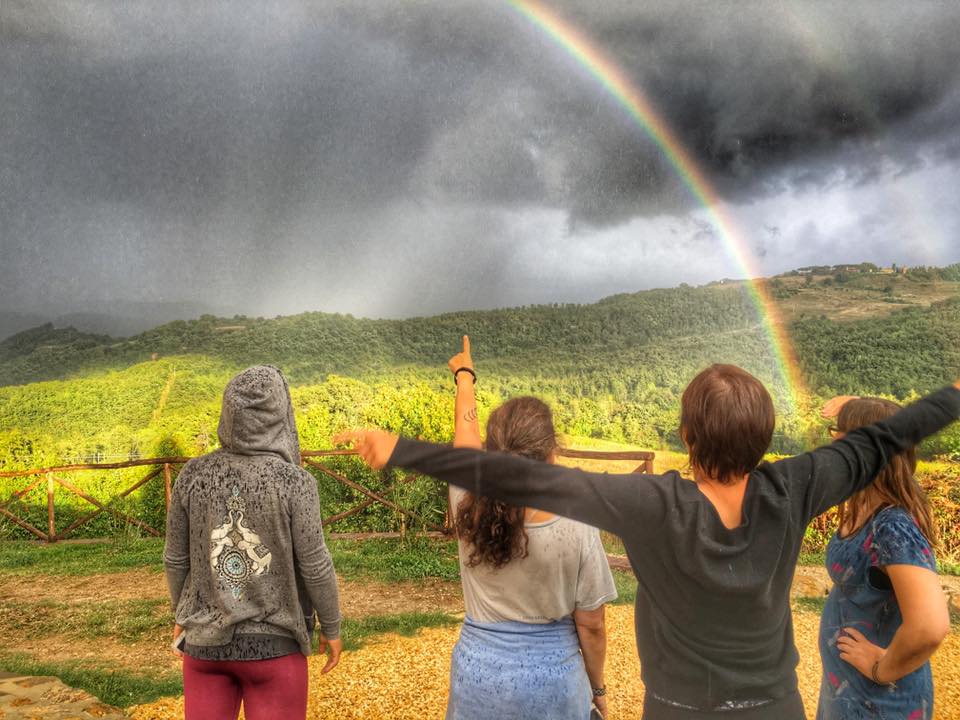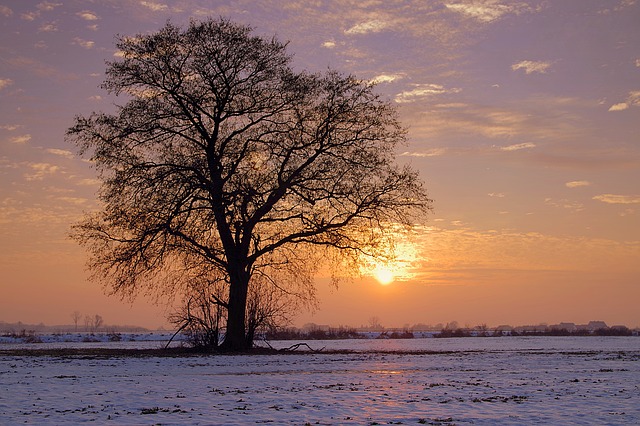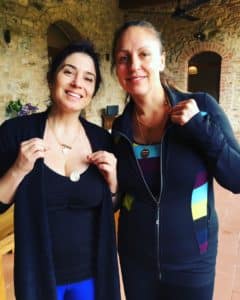By Michael Wayne Hampton
“Loneliness, and the feeling of being unwanted, is the worst poverty.” – Mother Teresa
Introduction:
I’ve felt an essential loneliness throughout my life, and from the time I was a child I’ve struggled to feel the safety, understanding, and love that I imagined could be found in emotional closeness of others. Whether this defining emotion for much of my existence has its roots in a childhood where I often felt disregarded, out of place, threatened, and alone, in my neural biology living with Bipolar II, a psychiatric disorder which leads 17% of those it impacts to commit suicide, or is the result of all the unnamable psychic forces which shape one’s life is hard to quantify or define clearly. What became clear was that the continuation of this all-encompassing grief, as severe depression for the initiated moves far beyond sadness, had escalated to not only threaten my life, which it had nearly taken before, but had grown to the extent that I was left to either submit to the waves of hurt which battered me, or find a way to live and create. At the midpoint of my life survival, rather than living, had become purposeless and too much to bear. The comforts of religion, the rational accounting of all I have to live for, did nothing to inspire me to do more than live out each day distracted by work of social media until the night came where I could drink my sense of self away to sleep. In the last six month my ever-present loneliness, the sense that I was worthless and unloved, threatened not only my life, but my ability to create art, which in many ways I cared much more about than my own life. To move beyond the aching of questions unanswered, the silence that never left, the ghosts I carried, I turned to books to study how to exist. Stoic philosophy, social psychology, and Eastern religious traditions helped me form, and continue to form, a framework to evolve into a person who can do the work he felt he was born to do without the necessity for external support or acclaim. It’s a work in process, multi-faceted, and includes a number of various but cohesive personal lifestyle, physical, and psychological processes and projects, but in this essay I will focus briefly on the nature and impact of loneliness on the artist’s life, how ancient philosophy, theology, and modern psychology can aid an artist in moving past their personal loneliness no matter its roots, and present concrete principles that can be incorporated to escape the sense of loneliness toward the goal of better engaging in creative Flow states.
The Roots of Loneliness:
As I’ll explore later, the sense of loneliness is not the same as being physically, psychologically, or emotionally alone in a definable sense. It’s an existential and psychological state wherein one is wracked with the sense of being cut-off, shipwrecked within one’s own life, unable to connect with others in a meaningful and enriching way, or to receive the love and understanding that gives fulfillment and joy to life. Loneliness can be bred from a sense of purposeless, from the loss of a community or culture, or most often the loss of a loved one. Biologically, it can also be born out of a deficiency in hormones like oxytocin which play a role in the sense of social bonding. It may also result from psychic distress due to trauma or neglect, especially if it occurs during early childhood when the sense of self (the ego) is being formed. In many cases one or many of these factors work collectively to form a view of self that is negative, threatened, and hollow.
The Impact of Loneliness for the Artist:
Loneliness, as any psychic state, impacts an individual’s life personally, and the profoundness to which it defines and encompasses the sense of self depends on innumerable factors, but for the artist loneliness is especially complex in that as artists we so often depend on existential longing and dissatisfaction to create while at the same time we frequently experience heightened feelings of loss and emptiness which make it impossible to create the work we frequently use to justify our existence. For many artists the everyday facts of their lives are secondary to our work they create, and loneliness can be a motivating force to strive harder to create so that one might be satiated by the sense that he or she matters because their work has received praise and acceptance. The writer and theologian Jean Vanier speaks of this in his book Becoming Human when he states, “Loneliness can become a source of creative energy, the energy that drives us down new paths to create new things or to seek more truth and justice in the world.” The social psychologist Mihaly Csikszentmihalyi notes that those dealing with psychic entrophy, a disordered and unsatisfied psychological state, often will find in art a way to order their consciousness and enter a psychological state he termed Flow, a state that will be briefly examined later.
While these are examples of where the results of loneliness are positive for artists as they lead to motivation, the dangers of a life lived with essential feelings of singularity and worthlessness are significant. Existing in a perpetual state wherein one feels alone, unmoored from others and his or herself, and without purpose is often a zero sum game in which the emotional regions of the mind turn to self-denial and self-destruction as coping mechanism to lend meaning to life. Artists are especially susceptible to this due to the romantic traditions of personal tragedy holding an inherent value of its own which is not unlike art. The artist stops creating work, and instead goes about harming themselves to increasing degrees, challenging the limits of the love they do have, or turning inward so as to prevent further external acknowledgement of their perceived failings and faults. Loneliness in this case has not motivated the artist to produce and more deeply engage with their work, but to accept the fact that it, like their own life, is meaningless and will be forgotten. This is the reason loneliness must be confronted, but the manner in which each individual artist does so must align with their own ethics and wants. The following are some simple illustration to aid artists who want to move beyond the empty longing for the unnamed, and return to themselves and some work.
Stoicism, Yoga, Taoism, and Flow
Stoicism was a formal school of philosophical thought, which along with other schools in the Roman world such a Hedonism and Epicureanism, sought to answer the basic question that those artists struggling to live with essential loneliness contend with, that is to say, “What is the purpose of life?” It’s a question that philosophers (i.e. wisdom lovers) have grappled with throughout history. For the Stoics the answer to this question was to cultivate strength and self-control to master negative emotions. This strength is not a masculine or militaristic one, but is more closely related to the development of mindfulness present in diverse communities such as Yogic meditation to the Taoist worldview in that it is based on the acceptance of what is, rather than the psychic battle of what was or what might be. Lao Tzu, the founder of Taoism, stated that “If you are depressed than you are living in the past. If you are anxious then you are living in the future. If you are at peace you are living in the present.” If this is true, than peace can be found by becoming honestly rooted in the present as prescribed by philosophers and mystics alike, then what benefit would doing so serve for artists? In short, the answer is the ability to enter a creative Flow state, one which their loneliness has prevented through emotions that led to Csikzentmihalyi’s psychic entrophy.
Flow, as defined by Csikzentmihalyi, is a state of optimal psychological experience. It is a state, often commonly known as “the zone,” which authors Steven Koltner and Jamie Wheel defined in their book Stealing Fire as possessing four essential qualities: selflessness, timelessness, effortless, and richness. It is in short a psychological state one can train for in which the ego, the sense of time, and of hardship dissolve as the areas of the mind not given to past ruminations or emotions switch off, and those associated with focus, conscious decision-making, and action become hyper-engaged. For the artist developing a practice that will allow them to enter a flow state not only allows them to better do their work, but also frees them from the prison of the past and the uncertainty of the future. It’s an experience all artists are familiar with, those moments when the work moved through them, when it formed itself on the page, instrument, or canvas, and the artist was merely the vessel it chose to be born through.
The Forest, and The Cell
There are few things more psychologically damaging to prisoners than solitary confinement; especially long term solitary confinement. After interviewing hundreds of prisoners held in solitary confinement, Harvard faculty member Stuart Grassian, found that “…roughly a third of the inmates were actively psychotic and/or suicidal.” But why? Across the world any number of people choose to live their lives alone in the wild on their own terms away from human contact, to, as Henry David Thoreau stated, “…live deliberately / to front only the essential facts of life…” In each case, the man in the wild hundreds of miles from his nearest neighbor and the man in the cell are fundamentally alone, but their loneliness is radically different due to factors such as circumstance, proximity, and agency.
For the purpose of illustration we must accept that though both are alone, the circumstances for the separation of each is much different. The man in the wild is most likely there by choice whereas the man in the cell finds himself isolated by the condemnation of others.
Proximity also further weighs on their experience for the man in the cell knows that other humans are near and could interact with him if they chose, but choose not to. The evidence of his or her being below consideration is concrete. However the man in the wild is free from the aching for companionship since he has accepted that there is simply none available. He is left to find kinship where he can from the natural world or within himself.
Lastly the element of agency is a stark divide in that the man in the cell can’t escape on his own and is dependent on the care of others who are not invested in his humanity, whereas the man in the wild holds the affirmation of his humanity and his survival within himself and is free to chose which direction to take next.
In this illustration each man is alone, but the challenge to overcome loneliness is much greater for the man in the cell who has worse circumstance, is tortured by the proximity of others, and has little agency to change. Artists who find themselves under the cover of loneliness share much with the man in the cell as they’re seeking release through the love and concern of others, through acceptance and safety granted, rather than, as the man in the wild, accepting the fact that they are alone. They continue to engage with a psychic battle with the past and future in which they long to be part of a community beyond themselves which is inherent to being human. Through our evolution we’ve not only domesticated animals for labor and protection, but also for friendship. Only through accepting that one is alone however, can one hope to move past loneliness, as loneliness is a desire for self-acceptance, for safety, and love from another. As the Stoics, social psychologist researching Flow Theory, and Yogic mystics have taught for millennia however, transcending suffering comes not from psychically ruminating and aching over external factors beyond one’s control, but through the culmination and acceptance of the self. The way out is in. An artist who wants to move past loneliness must first accept that they are alone in a heartfelt and definitive sense.
Moving Past Mantra
Since I was a young man I’ve seen myself through the lens of a personal mantra; “lonesome and heartbroken.” That was my self view’s tenant; that I was born to be lonesome and heartbroken, and throughout my life many events, the loss of my mother or of loves I held closest to me, served to confirm this ethic. The danger in this was that those words formed the walls of my psychological cell because, as author Scott Turow notes, “Who are we but the stories we tell ourselves, about ourselves, and believe.” Each day I told myself that I was lonesome, and I was, whether by nature or a habit of mental programming. Each day I was heartbroken by love and acceptance often vague, and always out of reach.
The romance of brokenness for artists has an incredibly long tradition, but despair in and of itself is never a rich state, nor one that leads to creative advancements. This was recognized in the modern era by the poet Allen Ginsberg who stated, “It isn’t enough to have your heart broken because everybody’s heart is broken now,” and by the author Ernest Hemingway who wrote in A Farewell to Arms, “The world breaks everyone and afterward many are strong in the broken places.” Constantly considering the fact that I had always been, and would always be, “lonesome and heartbroken” prevented me from creating, especially in times of overwhelming emotional or personal loss. Through study, and time, I found that I had to adopt new mantras to not only survive my life, but return to it in a manner that would allow me to enjoy it and do the work I felt I was born to do. In the final section I offer these mantras for your consideration.
Memento Mori
It is rumored that the Roman Emperor Julius Ceasar had a servant tasked with following him around, who throughout the day would whisper “Memento mori,” (Latin for, “Remember, you will die.”) in his ear to keep him rooted and humble. This is true for every man and woman who ever has or ever will live, but there is an important addendum to that vital reminder, “Mementote vos soli,” (“Remember, you are alone.”). This may seem a harsh edic to offer artists struggling with loneliness, especially those living with severe life-threatening major depressive disorders, but it is not offered to be grim so much as to cement the fact that each of our lives are conceived, lived out, and end alone. Each person will have individuals who love them deeply for a time and leave, who come in and out of their life leaving a wake of loss and grief, but this grieving is for a past already lost and a present which may never come as Marcus Aurelius rightly stated. Only through acceptance that we as artists and humans are essentially alone, as the man in the wilderness finds peace through his loss of expecting anything from another, can we move past loneliness, and begin to do the work that will lead us to creative Flow and inner peace. Love those you can, but when they go accept that you’ve only returned to the wild, and you have the choice and strength to control your experience in the present if you can let go of your historical regrets and the hopes of the future. There is nothing left to win or lose, but the present. You have to end the fight. You are alone in the wild. Do your work.
Michael Wayne Hampton is the author of three books, and his work has appeared in numerous publications such as decomP, McSweeney’s, and Atticus Review. He can be reached via his website michaelwaynehampton.com or on Twitter at @motelheartache.

Join The Manifestation Retreat: Manifesting Under The Tuscan Sun. June 17-24. Email retreats@jenniferpastiloff.com or click the picture above.

Join Jen Pastiloff at her signature workshop in Atlanta at Form Yoga on Aug 26 by clicking the picture.





No Comments